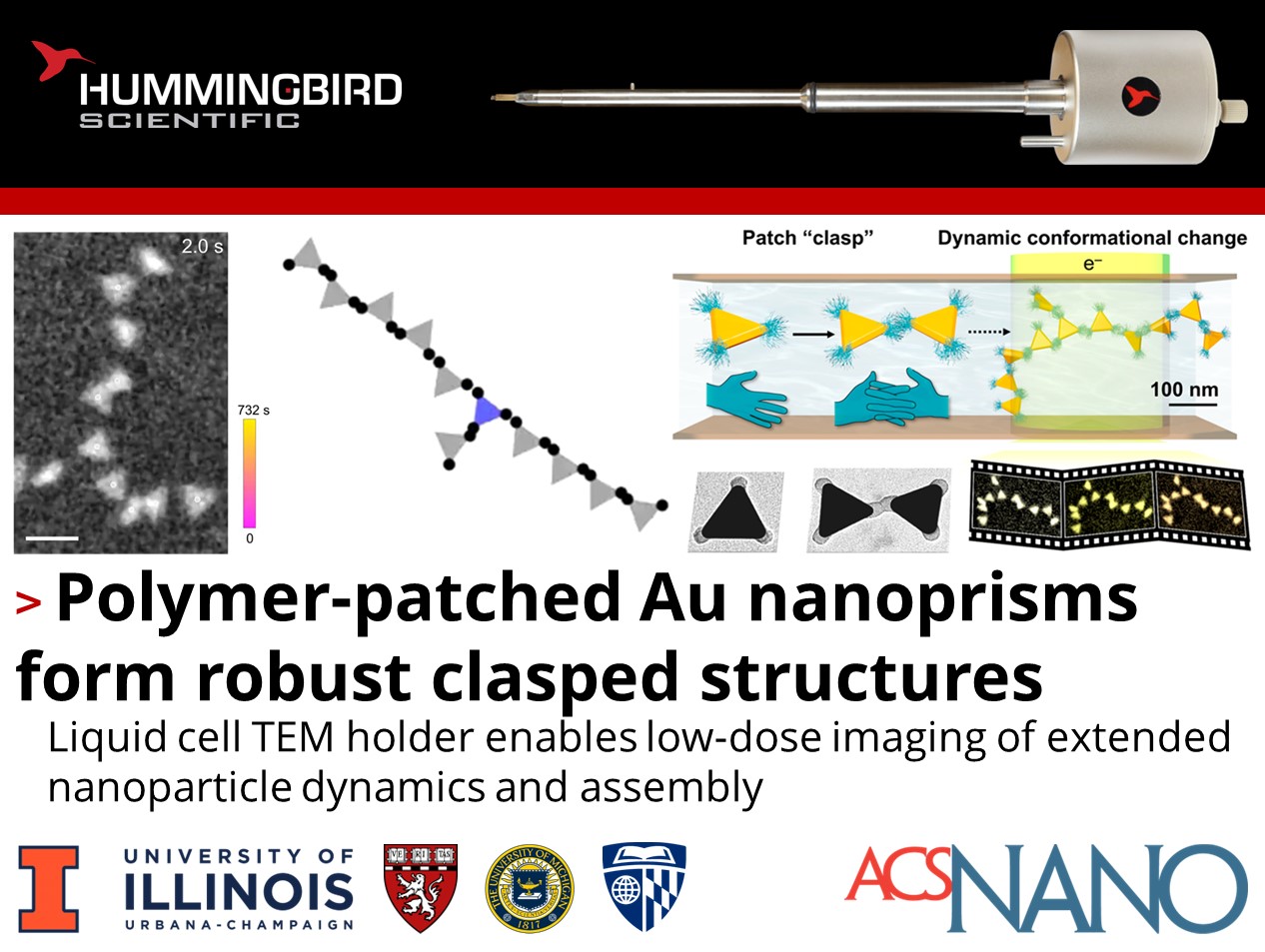How can polymer patches affect nanoparticle assembly?
Ahyoung Kim, Qian Chen, and their colleagues at the University of Illinois-Urbana Champaign, Harvard Medical School, University of Michigan, and Johns Hopkins University published recent work using their Hummingbird Scientific in-situ liquid flow TEM sample holder to investigate assembly dynamics of polymer-patched Au nanoparticles in solution.

Figures showing a) TEM video of relaxation dynamics of a branched network of patch-clasped nanoparticles. b) Schematic of patch-clasping mechanism. c) Simulated video of relaxation of branched network of patch-clasped nanoparticles. d) Simulated video of relaxation of extended linear sawtooth structure of patch-clasped nanoparticles. Copyright 2023 American Chemical Society
TEM observation revealed how polymer patches on gold nanoprisms selectively attract each other to form flexible yet robust “clasps” that connect the nanoparticles. These clasped nanoparticle assemblies exhibited fascinating dynamics like interconversion between different configurations and collective structural relaxations, promising unique properties for applications like reconfigurable metamaterials. Crucially, the Hummingbird holder enabled low-dose imaging to prevent polymer degradation, while allowing solution exchange to optimize assembly conditions in situ. Integrating experiments with polymer theory, molecular simulations, and machine learning analysis provided molecular-level insights into the observed “patch-clasping” mechanism.
Reference:
Ahyoung Kim, Kireeti Akkunuri, Chang Qian, Lehan Yao, Kai Sun, Zi Chen, Thi Vo, and Qian Chen, ACS Nano 18 (1) 939-950 (2023) DOI: 10.1021/acsnano.3c09710
Full paper Copyright © 2023 American Chemical Society
View All News

